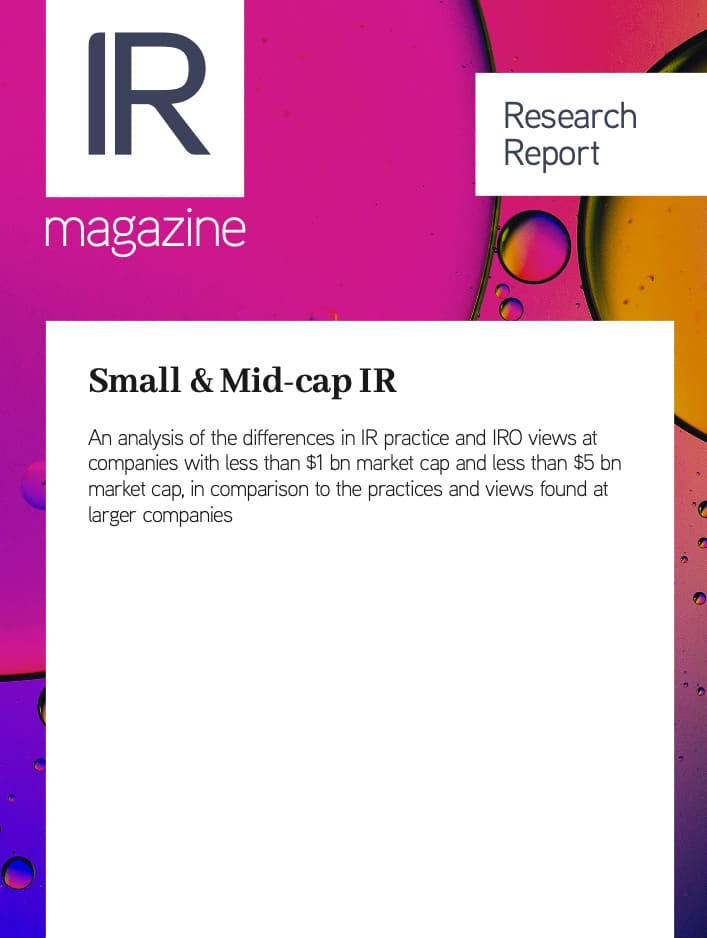IR Magazine’s Small and Mid-cap IR report is an analysis of the differences in IR practice and IRO views at companies with less than $1 bn market cap and less than $5 bn market cap, in comparison to the practices and views found at larger companies.

Findings in this report are based on data from IR Magazine research reports and surveys from Q1 2022 to Q2 2023.
By downloading this report, you will learn:
- How IR resources differ according to company size
- How the priorities of IR change between smaller and larger companies
- When market cap affects engagement with investors and senior management
- The extent to which companies of different sizes are engaged in wider social issues.
If you have any questions or need help with your subscription, please contact our subscriptions expert Philip Brooks on +44 20 8004 5015.
View a sample of this report here.
Key findings
- IR teams at larger companies typically have *** IR budget of small and mid-cap IR teams.
- From small to large cap, each increase in cap size sees an increase in team size of just over a third.
- The median salary for both small and mid-cap IROs is one pay bracket lower than for large/mega-cap IROs.
- The number of IR team members with no additional responsibilities outside of IR increases with company size.
- From small to mega-cap, the real-term rise in the number of investor meetings increases with each cap size.
- The key difference in the number of investor conferences attended is between small-cap and mid-cap companies.
- More than *** of small-cap IR teams report directly to their CEO, compared with *** at mid-caps, *** at large caps and *** of mega-cap IR teams.
- There is little difference according to company size in the amount of time senior management spends on IR.
- Senior managers at small-cap companies typically attend approaching *** of all their meetings with investors, compared with *** percent at mid-cap companies, *** percent at large caps and just under *** mega-cap firms.
- Both small and mid-cap IROs place greater importance on increased research coverage than do large or mega-cap IROs.
- As company size rises from small to mega-cap, there are more than five extra analysts covering them for each cap size.
- It is less common for small-cap companies to outsource proxy solicitation than for other companies, and notably more common for them to use outside services for their IR websites.
- Small-cap IR teams are less likely than teams at other cap sizes to receive questions from investors on women’s rights and racial discrimination.
- Half of all IROs at small caps and just under half of IR professionals at mid-cap companies agree that companies should focus on their core mission and only comment on issues that directly affect that mission.
***Subscribe to IR Advanced for full key findings and the full report. Contact Philip Brooks using the information below or click here.
Small and Mid-cap IR report

An analysis of the differences in IR practice and IRO views at companies with less than $1 bn market cap and less than $5 bn market cap, in comparison to the practices and views found at larger companies
An analysis of the differences in IR practice and IRO views at companies with less than $1 bn market cap and less than $5 bn market cap, in comparison to the practices and views found at larger companiespdf | 3.3MB





